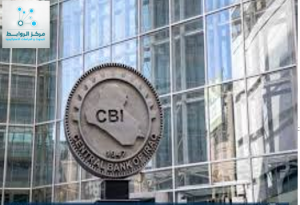“Wide criticism of the Central Bank’s reforms: The impact of the gap between official and parallel prices on the Iraqi economy”
“Wide criticism of the Central Bank’s reforms: The impact of the gap between official and parallel prices on the Iraqi economy”
1-23-2025
 Researcher Shaza Khalil*
Researcher Shaza Khalil*
In recent years, Iraq has witnessed major changes in its currency management system, mainly centered around the introduction of a new platform by the Central Bank to regulate the sale of the US dollar. However, despite these reforms, experts have expressed concerns about the effectiveness of these changes, especially with regard to widening the gap between the official and parallel exchange rates, and their subsequent impact on the country’s economy and the daily lives of citizens.
Historically, the Central Bank of Iraq sold between $
40 billion and $50 billion annually through the currency window, an exchange mechanism that managed the flow of US dollars into the country. However, in 2024, after the introduction of the new platform, this figure rose sharply to $81 billion, while the figure with correspondent banks reached about $300 million per day. Although these changes were expected to provide more transparency and efficiency in the currency market, the results have not been as hoped, according to some economists.
The widening gap between official and parallel rates
Before the introduction of the platform, the gap between the official exchange rate (set by the central bank) and the parallel or black market rate was small. Rates were largely aligned, and citizens relied on a currency value that was stable and largely predictable. However, the introduction of the platform and the use of correspondent banks have dramatically changed this dynamic.
According to recent reports, the gap between the official and parallel dollar rates has widened to around 15%. This gap has raised concerns among experts who point out that the central bank’s reforms, rather than stabilizing the exchange rate, have exacerbated the problem. In theory, these reforms were intended to simplify the process, increase access to foreign currency, and reduce illegal or speculative trading. However, critics argue that the system is not working as expected and could cause further instability in the currency market.
Impact on the Iraqi Economy
The widening exchange rate gap has significant implications for the Iraqi economy. First and foremost, it contributes to increased uncertainty among businesses and consumers. Businesses that rely on imported goods are directly affected by the discrepancy between official and parallel prices. As the gap widens, businesses are forced to buy dollars from the parallel market at higher prices, making imported goods more expensive. Of course, this increased cost is passed on to consumers, leading to inflation and higher living costs.
Moreover, the central bank’s reforms were supposed to encourage a more efficient and transparent financial system. Instead, the widening gap between official and parallel rates is increasing mistrust in the monetary system. As the cost of goods and services continues to rise, citizens find themselves facing an erosion of purchasing power, negatively impacting their quality of life.
The role of the central bank
Many critics argue that the central bank’s reforms, rather than achieving their intended goals, have exacerbated the problems they were intended to address. The initial goals were to regulate Iraq’s foreign exchange market, promote stability, and reduce reliance on the parallel market, which was plagued by inefficiency and speculation. However, the widening gap between official and parallel rates raises questions about whether the reforms are achieving the expected results.
One of the most prominent criticisms is that the central bank has not done enough to address the underlying structural issues affecting the currency market. The availability of dollars through the platform and correspondent banks has increased, but this has not been accompanied by parallel reforms in Iraq’s broader financial and economic structures. Until these fundamental challenges are addressed, experts believe the gap between the official and parallel rates will continue to widen, further destabilizing the Iraqi dinar and posing additional challenges for businesses and citizens.
Conclusion
The Central Bank’s reforms on the sale of the dollar have been met with significant criticism, particularly due to the widening gap between the official and parallel exchange rates. Rather than stabilizing the Iraqi economy, these changes have exacerbated existing problems, leading to inflation and a deterioration in citizens’ purchasing power. As Iraq continues to face these challenges, experts believe that more comprehensive reforms are needed to address the root causes of the currency crisis, enhance stability, and improve the economic conditions of Iraqi citizens. Until these issues are resolved, the gap between the official and parallel rates will continue to have a profound impact on Iraq’s economy and the lives of its citizens.
Economic Studies Unit / North America Office
rawabetcenter.com
